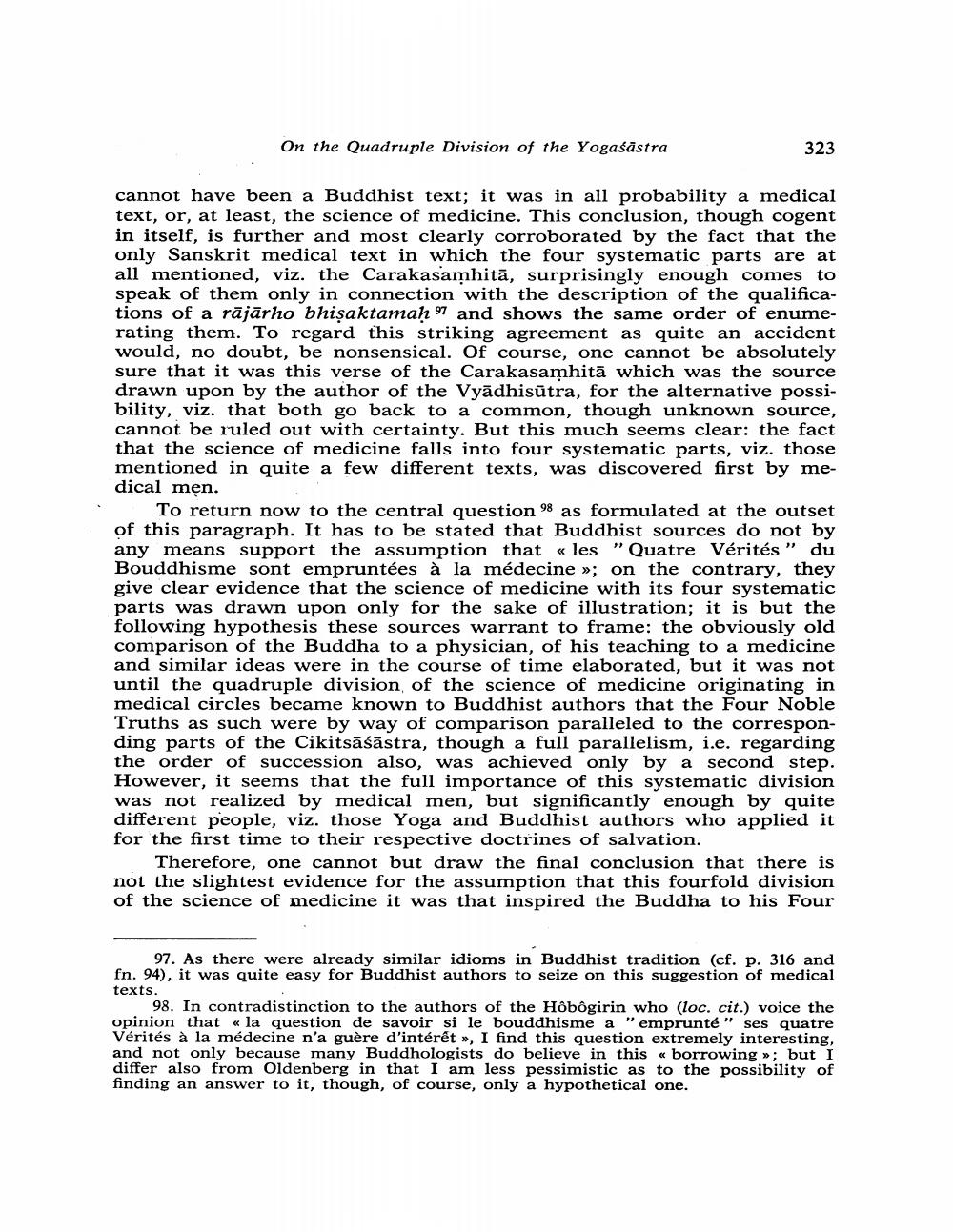________________
On the Quadruple Division of the Yogaśāstra
323
cannot have been a Buddhist text; it was in all probability a medical text, or, at least, the science of medicine. This conclusion, though cogent in itself, is further and most clearly corroborated by the fact that the only Sanskrit medical text in which the four systematic parts are at all mentioned, viz. the Carakasamhitā, surprisingly enough comes to speak of them only in connection with the description of the qualifications of a rājārho bhisaktamaḥ 97 and shows the same order of enumerating them. To regard this striking agreement as quite an accident would, no doubt, be nonsensical. Of course, one cannot be absolutely sure that it was this verse of the Carakasamhitā which was the source drawn upon by the author of the Vyādhisūtra, for the alternative possibility, viz. that both go back to a common, though unknown source, cannot be ruled out with certainty. But this much seems clear: the fact that the science of medicine falls into four systematic parts, viz. those mentioned in quite a few different texts, was discovered first by medical men.
To return now to the central question 98 as formulated at the outset of this paragraph. It has to be stated that Buddhist sources do not by any means support the assumption that «les "Quatre Vérités” du Bouddhisme sont empruntées à la médecine »; on the contrary, they give clear evidence that the science of medicine with its four systematic parts was drawn upon only for the sake of illustration; it is but the following hypothesis these sources warrant to frame: the obviously old comparison of the Buddha to a physician, of his teaching to a medicine and similar ideas were in the course of time elaborated, but it was not until the quadruple division of the science of medicine originating in medical circles became known to Buddhist authors that the Four Noble Truths as such were by way of comparison paralleled to the corresponding parts of the Cikitsāśāstra, though a full parallelism, i.e. regarding the order of succession also, was achieved only by a second step. However, it seems that the full importance of this systematic division was not realized by medical men, but significantly enough by quite different people, viz. those Yoga and Buddhist authors who applied it for the first time to their respective doctrines of salvation.
Therefore, one cannot but draw the final conclusion that there is not the slightest evidence for the assumption that this fourfold division of the science of medicine it was that inspired the Buddha to his Four
97. As there were already similar idioms in Buddhist tradition (cf. p. 316 and fn. 94), it was quite easy for Buddhist authors to seize on this suggestion of medical texts.
98. In contradistinction to the authors of the Hôbôgirin who (loc. cit.) voice the opinion that « la question de savoir si le bouddhisme a "emprunté" ses quatre Vérités à la médecine n'a guère d'intérêt », I find this question extremely interesting, and not only because many Buddhologists do believe in this « borrowing >>; but I differ also from Oldenberg in that I am less pessimistic as to the possibility of finding an answer to it, though, of course, only a hypothetical one.




